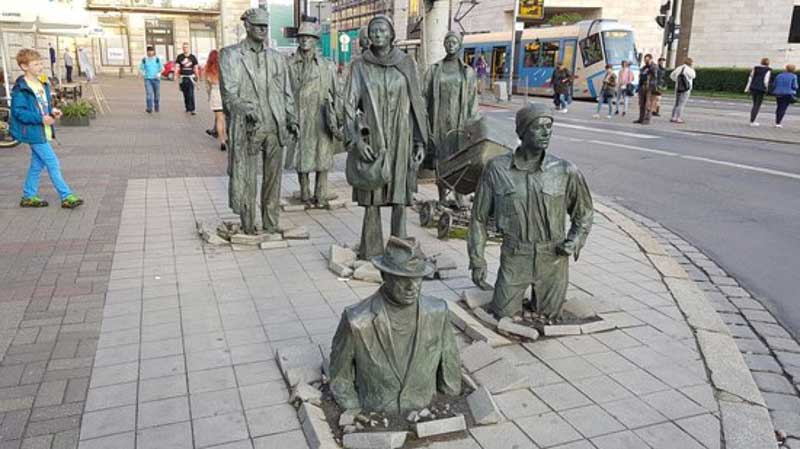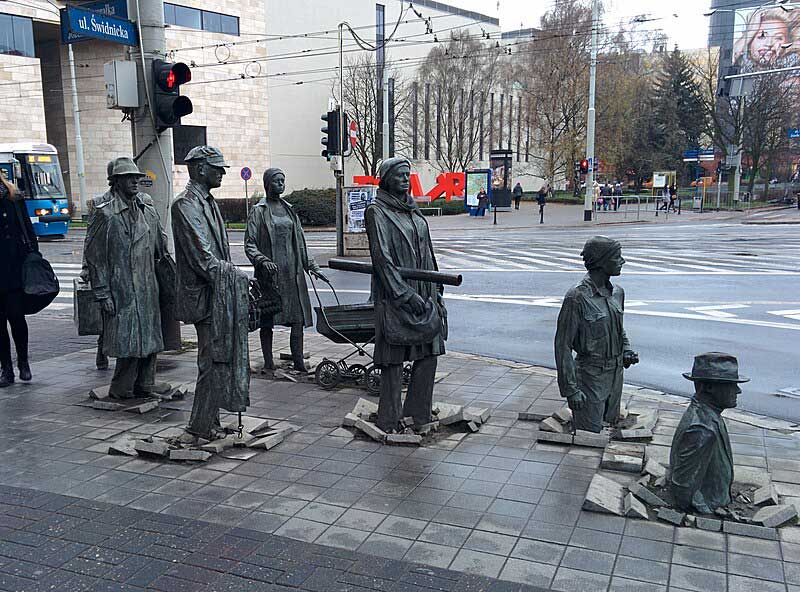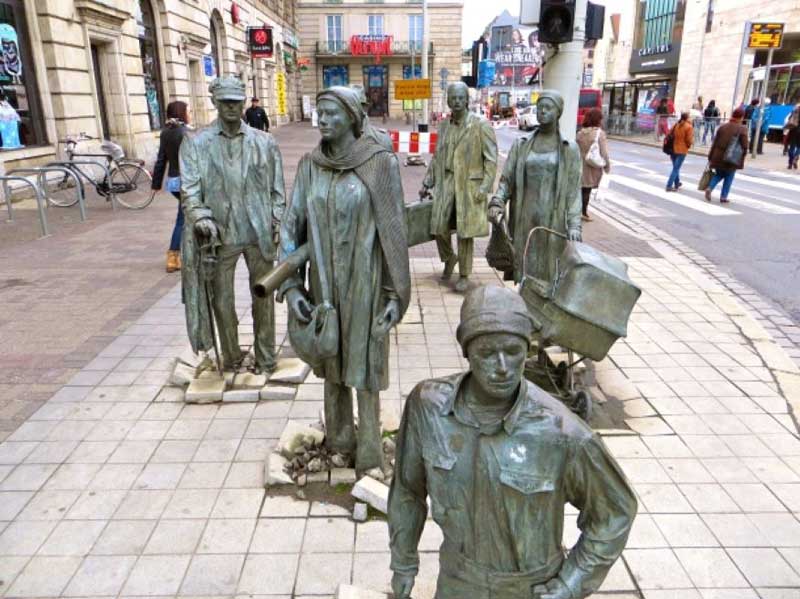
Located in Wroclaw, Poland, on the pavements at the intersection of Pilsudskiego and Swidnicka streets, the chilling bronze sculpture, called Passage and depicting a group of 14 lifelike people, seven people descending into the ground on one side of Swidnicka Street, and seven people reemerging from the ground on the other side, was created by the Polish sculptor Jerzy Kalina and was installed in December 2005, to coincide with the 24th anniversary of the onset of martial law in Communist Poland, on 13 December 1981. During those black days of martial law, people were forced to move underground in apprehension, since the authoritarian government imposed restrictive laws on everyday citizens to quash the burgeoning anti-Communist political opposition groups, and many were arrested on flimsy grounds in the middle of the night and disappeared forever from the face of the earth, which is reflected by the descending pedestrians in one side of the installation.
Reemerging of the group on the other side of the street is believed to represent the re-emergence of Polish citizens when martial law was finally lifted from the country in 1983.


The captivating monument, also called Monument to the Anonymous Passerby, was initially created by Jerzy Kalina for the purposes of a television programme, which was installed in 1977.
Later, the installation was dismantled and was shifted to the National Museum in Wrocław, where it remained for 28 years, when the plaster statues were replaced by the bronze figures, installed at the current location, and was unveiled on the night of 12 to 13 December 2005 on the 24th anniversary of the imposition of martial law, adding the rise of the ordinary man on the opposite side of the street, signifying the withdrawal of martial law in 1983, in the new version.

The imposing public art installation, locally known as Przejście, which stands for Passage or Transition, created by Jerzy Kalina, is also referred to as the Monument of the Anonymous Passersby or the Anonymous Pedestrians. The symbolic sculpture, consisting of seven people descending into the ground on one end of the road and another seven people emerging from the ground on the other end, was included in the list of the 15 most beautiful places in Poland, prepared by Newsweek magazine in 2011.
Apart from that, the American magazine Budget Travel selected the installation as one of the most unique places in the world.
